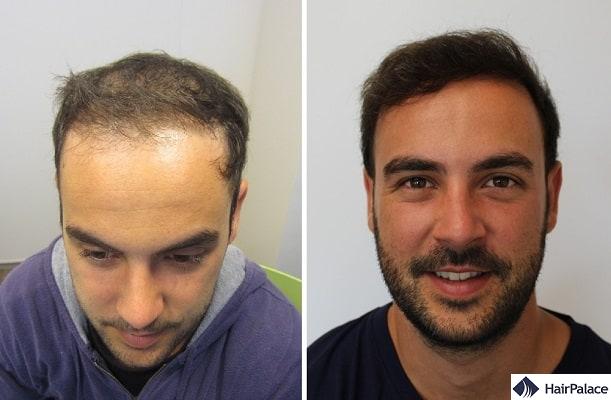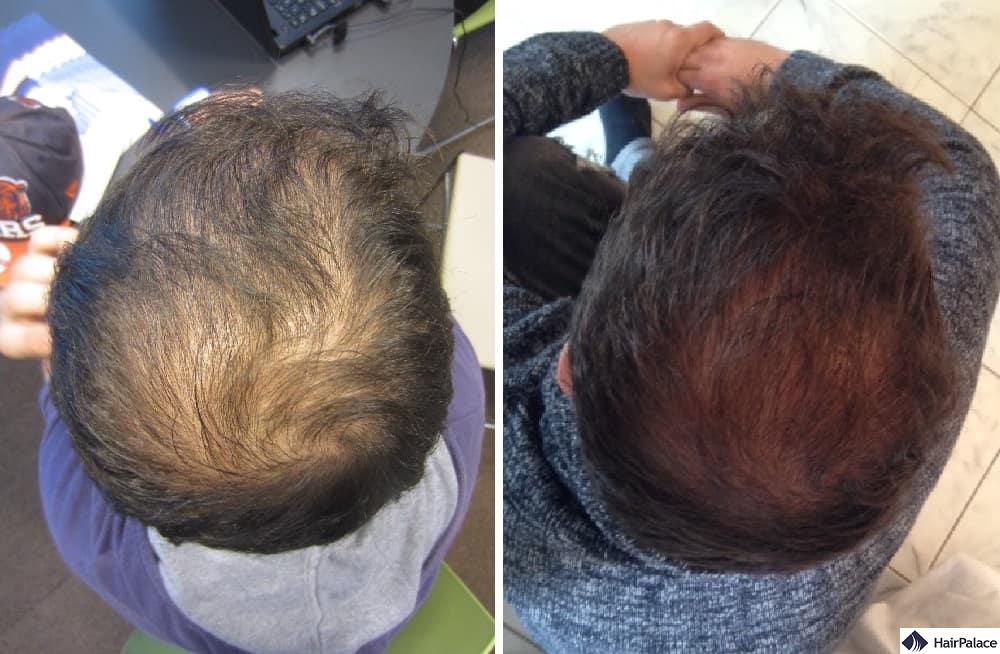FUE2 Hair Transplant – Hairline Correction After an FUT
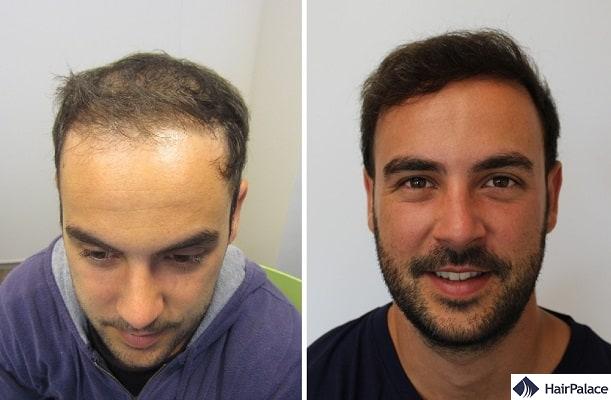
- FUT or FUE2? What’s the difference?
- Cyril’s consultation and FUE2 surgery
- The post-op period after the FUE2
Hair transplants offer to permanently restore and perfect hairlines that have crawled up, and fill parts of the scalp that have thinned out.
However, a single hair transplant is not always enough.
Some with more extensive hair loss might need multiple sessions to attain good density.
Others might need another transplant years after a successful surgery because they continue to lose their hair on a different part of their scalp.
Cyril’s case was slightly different.
He contacted us back in 2014 looking for a clinic to carry out his second hair transplant surgery.
He explained that he had a FUT surgery 2 years before, however, he was not completely satisfied with the result. Thus he was exploring his options to correct his hairline.
In this post, we will show you how we did just that and guide you through Cyril’s FUE2 surgery.
But first, let us compare the FUT and FUE2 methods!
FUT or FUE2 Safe System?
The differences between the FUT and FUE surgeries stem from the difference in the mode of extraction.
With the FUT, a strip of the scalp is cut out from the back of the head.
This strip is usually 10-30 cm long and 1-3 cm wide – the exact dimensions depend on several factors:
- the density of the donor area;
- the number of hairs needed;
- the laxity and elasticity of the scalp.
With a wound of this size, there is a higher risk of infection, and more complications can occur. It also needs more time to heal; the closing stitches are usually removed 10-14 days after the surgery.
This leads us to the most significant drawback of FUT surgeries: they leave a long scar behind.
Depending on how well the wound was closed and how well the scalp can heal, the remaining scar can be visible, especially with shorter hairstyles.
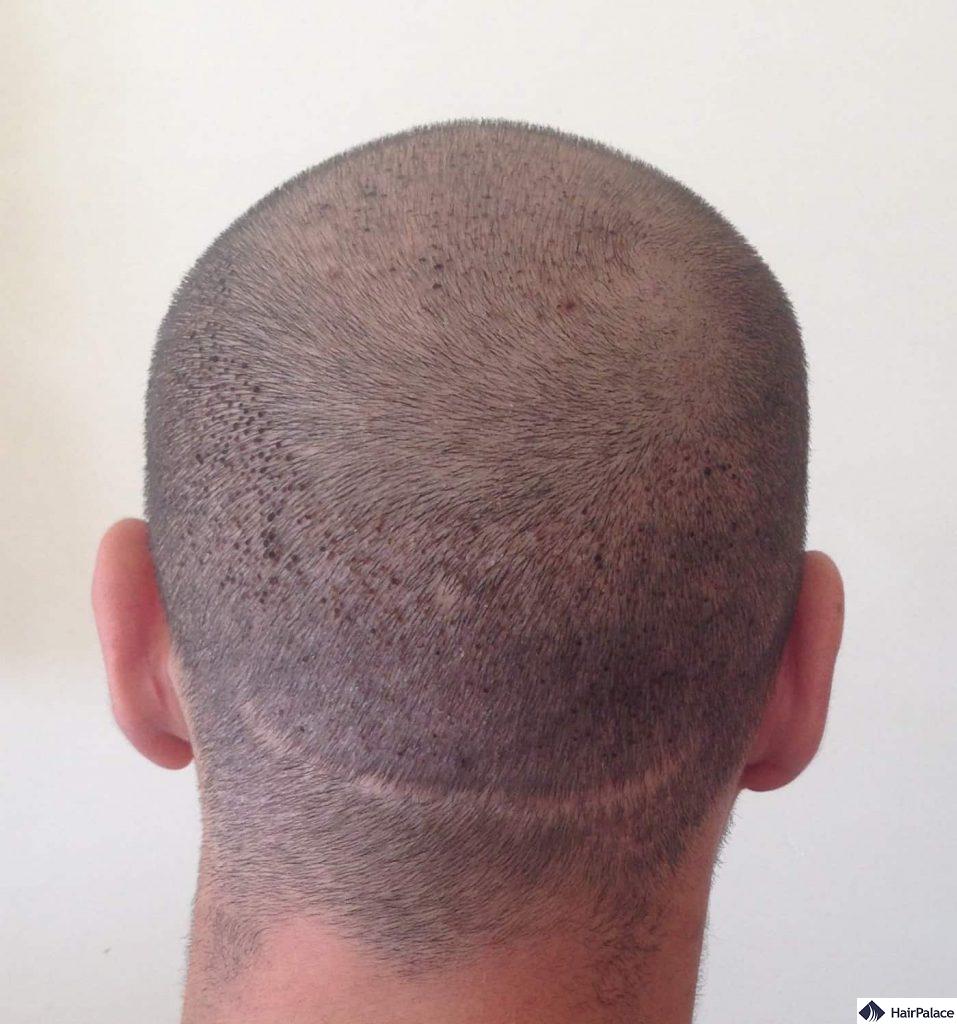
In comparison, with the FUE procedures, the follicles are extracted one by one.
For every surgery, we use its refined version, the FUE2 SafeSystem.
Its blunt punch lowers the risk of damaging the hairs during the extraction. This means that we have to extract only as many hairs as necessary.
Plus, transplanting healthier grafts leads to better growth and better results.
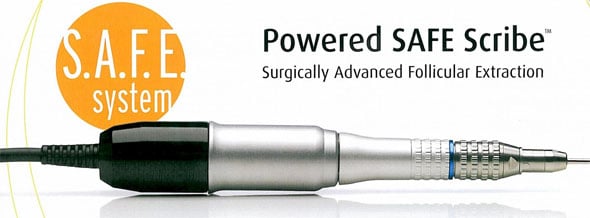
The punches needed for the extraction are less than 1 mm in diameter.
The tiny wounds close up on their own in a few days after the extraction without requiring special care. Not to mention, compared to the FUT surgeries, they leave virtually no room for infections.
As a bonus, after the FUE2 there is no large – and potentially visible – scar, so patients can freely choose shorter hairstyles.
What is FUE2 hair transplant? Cyril’s case study
Cyril contacted us for an examination on the 20th of May 2014.
Besides correcting his hairline he would have also preferred a little bigger density towards the crown area:
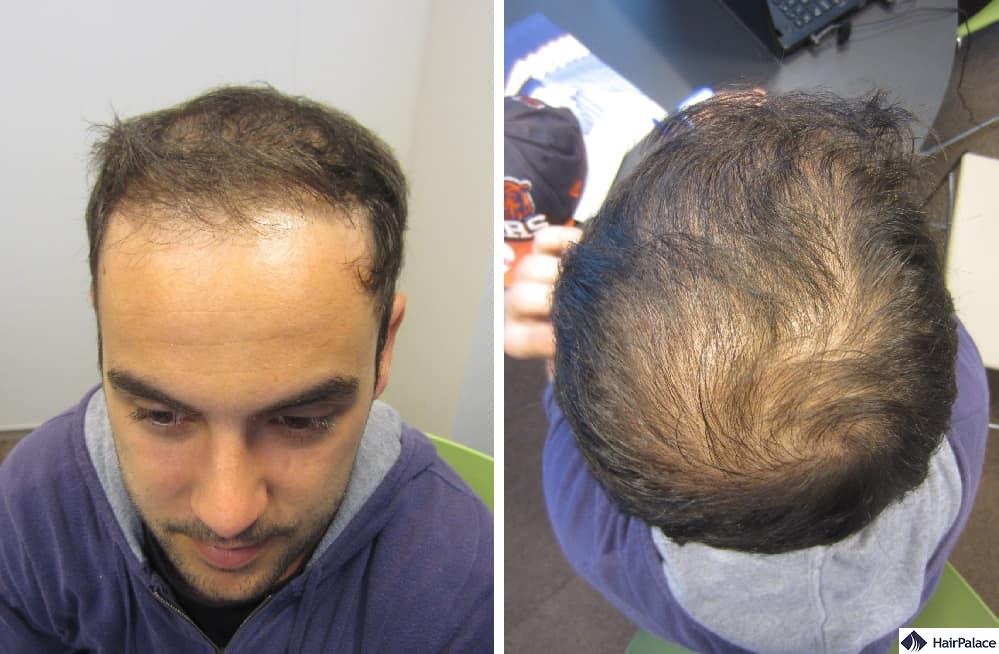
When we plan a second (or third, or even fourth) hair transplant session, we must check the condition of the donor area first.
Every donor area has different limits to start with, its size and density vary patient by patient.
And while multiple hair transplant sessions are possible in most cases, each surgery will limit the donor area further.
Reaching the limits of the donor area does not mean that it will be emptied.
Leaving ample coverage at the back is crucial for a natural look. And, after all, the surgery would be pointless if it would only leave a different area bald.
Luckily, in Cyril’s case, the FUT scar did not limit his donor area extremely. At the examination, we could confirm that it would be possible to achieve the result he was looking for.
We carried out Cyril’s FUE2 surgery on the 15-16th of October 2014 with 6000 hairs in total.
In line with his requests, we focused more on the frontal area. We built out the frontal line and increased the density towards the middle of the scalp for a natural look.
Then we could put a smaller amount, 1500 hairs to the crown. We also discussed that in case the hair loss will progress, he might need to touch up the crown later on.

The post-op period after FUE2 hair transplant UK
The most crucial part of the post-op progress is the first three weeks.
During the first week, the implanted area cannot be touched or washed at all. Instead, patients are asked to keep the scalp clean with a sterile saline solution we provide.
Besides, though the risk is small, they have to take antibiotics to prevent infections and inflammations.
From the second post-op week, patients have to start soaking their scalp in lukewarm tap water.
This softens up the crusts; patients then have to gently massage the implanted area every day.
During the third week, a bit of baby shampoo can be used to massage through the scalp and the hairs.
As a result, the scalp must become completely clean and free of scabs by the end of the week.
At his respective check-ups we found that Cyril followed the instructions well, and the implanted area improved as expected:
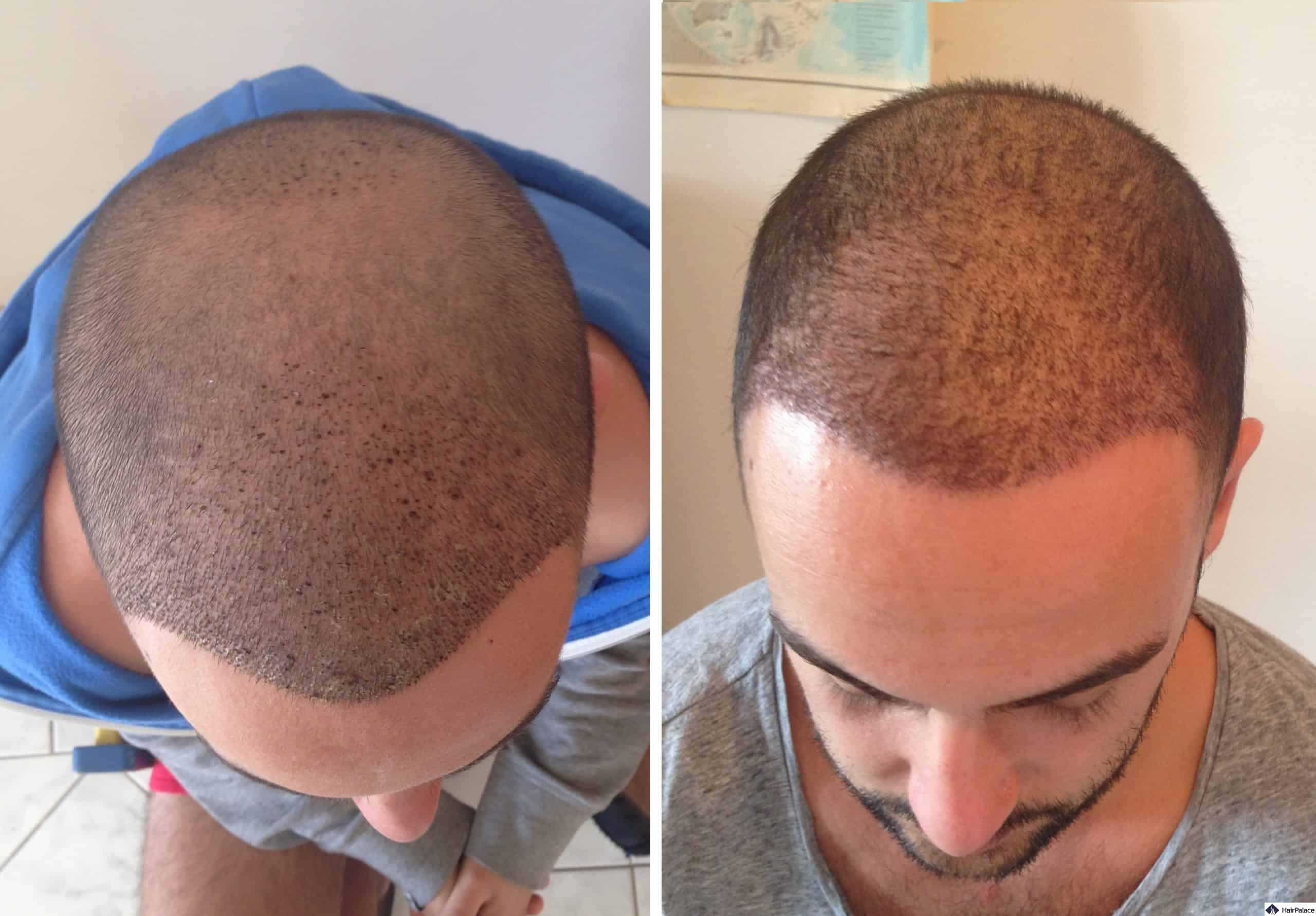
From the end of the 3rd week, the transplanted hairs start to fall out gradually.
By the end of the 3rd post-op month, the implanted area looks roughly the same as before the surgery.
The increase in the density starts from the 4th month – day by day there will be more hairs growing out.
Cyril experienced a dramatic change at his hairline between the 3 and 6 months’ check-ups:
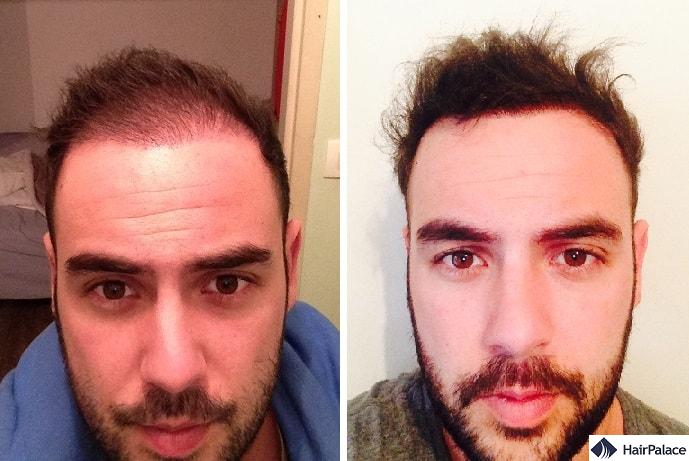
The remaining transplanted hairs gradually grow out in the following months. The result is final around 12-15 months after the hair transplant.
For Cyril, the last part of the process went just as smoothly, as the first 6 months.
Let’s take a look at his result and how impactful the change was:
